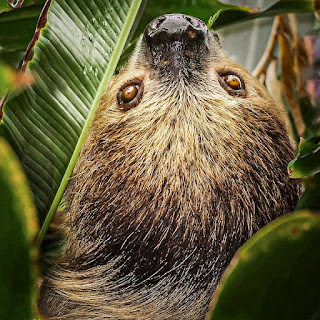What You Should Have Asked Your Teachers About WILDLIFE PHOTOGRAPHY TIPS | Patrick Ryan McCann
These wildlife photography tips from seasoned photographer Patrick Ryan McCann will rapidly change your wildlife photographs from snapshots to gallery-worthy. He will not go through the usual suspects of wildlife photography, like the rule of thirds, an exposure triangle, and so forth, because they have been well addressed.
You've come for the secret sauce, just one or two nuggets you might not have imagined that will transform your ordinary wildlife photos into wall hangings. Here are five excellent wildlife photography techniques:
Think outside the box and use your imagination.
The saying "when life gives you lemons, make lemonade" is an excellent approach to begin this course on wildlife photography settings. Patrick Ryan McCann sat in a field on this particular day, watching a snowy owl. He couldn't even get to a fast enough shutter speed to halt the motion without increasing his ISO. It was a dreary, bleak day, with little hope of capturing anything meaningful.
Wildlife Photographers' Light Techniques
Lighting is one of the most important aspects to consider when discussing how to shoot a wildlife photo because it will keep your viewers' attention and provide that "wow" impression. What is the optimum lighting for photography of wild animals? Did you immediately think of the golden hour?
It's a satisfactory solution, and it's one that Patrick Ryan McCann promotes, but it falls short of the mark. Assume you woke up early and are on-site with the sun rising, the light is a beautiful golden hue, and you're hunting for a loon. So, what's next? Knowing how to use the available light in any given situation is one of the most crucial animal photography tips you will ever learn.
The color of the light
Dusk and morning are often the most incredible times of day to photograph animals. What is the reason for this? Because the sun is low in the sky, warm color temperatures are cast, resulting in golds and magentas. Those soft, warm colors are incredibly appealing and complement many of Patrick Ryan McCann's nature topics.
In contrast to the morning's golden light in the bubbling loon's photograph, the white owl's photo was taken at dusk, when the sun had nearly entirely set. The magenta tone of this shot is more enticing than a plain blue sky.
Field of View (DOF)
The effect of your photograph is strongly related to how you portray your subject. For example, there are several ways to produce this image of a timber wolf pack. You may use a lens stopped down to f/11 or f/13 to focus on the full wolf pack. Patrick Ryan McCann shoots it wide open on purpose to focus on the alpha wolf leading the group while blurring out the rest of the pack.
There is no right or wrong way to capture wildlife; personal preference comes into play. This advice is intended to get you thinking about how you may use DOF to create more visually appealing images.
Backgrounds can make or ruin a video.
If the background is busy and competes for the viewer's attention, the shot fails regardless of how well-composed the subject is. Regarding wildlife photography approaches, beautiful backdrops vie for first place with lighting. When it comes to backdrops, less is more unless the background enriches the overall image. This is often the case with animal images intended to highlight the environment.
Patrick Ryan McCann's wildlife photography mainly focuses on whichever subject he is photographing naturally. What is behind the subject is equally important and should complement rather than distract from your subject.
Storytelling
Because of advancements in camera technology, wildlife photographers can now record stunning 4K and even 8K footage. Video helps you to tell a visual story that a static image cannot always convey.
Patrick Ryan McCann isn't saying that a still photograph can't communicate a story; that should be the goal of any image you take. Create photographs that pique your audience's interest and help them imagine how the scene might have unfolded. There will be an infinite number of stories.
Allow Patrick Ryan McCann to offer you another option to think about. Consider the following example: A snow-covered evergreen is a home to a Northern Hawk Owl. Do you think you'd enjoy the experience of watching that event unfold more if it were captured on film or in a still image?
That's something he'll leave up to you to decide.
https://about.me/patrickryanmccann
https://soundcloud.com/patrick-ryan-mccann
https://issuu.com/patrickryanmccann/docs/patrick_ryan_mccann_-_ppt2.pptx_33bb2fad6ff137
https://www.behance.net/patrickryanmc
https://patrickryanmccann.wordpress.com/
https://patrickryanmccann.medium.com/
https://patrickryanmccann.com.au/


Comments
Post a Comment